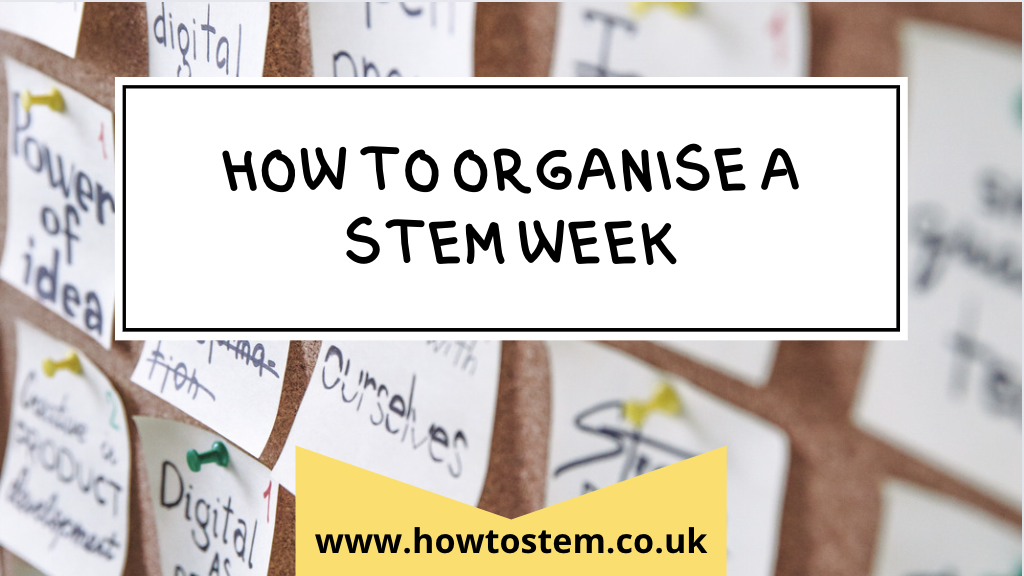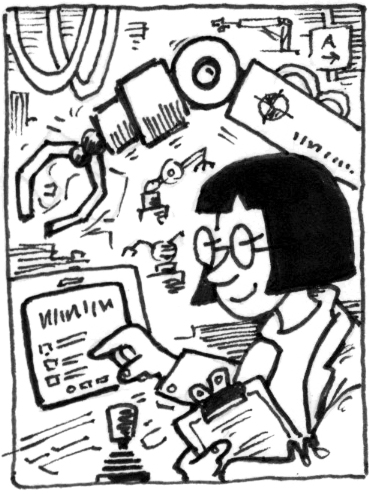
The idea for HowToSTEM was first planted in my mind back in 2018 when I decided to organise a STEM week at my primary school. Full of enthusiasm, I turned to the internet for inspiration, only to find… well, not a lot!
I wanted to share with my colleagues a selection of activities that were:
Everything I found seemed to be entirely the opposite of that. With so much out there for the well-trodden maths or science weeks, surely someone must have organised a STEM week in their school?
With the dawning realisation that I was going to have to look beyond Google for inspiration I put my thinking cap on and created an overview of how I wanted our STEM week to look. One of the most important outcomes I wanted to achieve was for the students to see how the disciples of science, technology, engineering and maths combine together in the real-world to create exciting job opportunities. I also wanted them to see the diversity of those roles. These subjects open so many more doors than simply being a scientist or a mathematician. Video games designer, zoologist, pilot… the list goes on and on! Perhaps if we could inspire them with the breadth of opportunity we could help to keep them engaged for longer?
Choose a Theme
STEM covers such a broad range of areas that its impossible to do them all justice in a week. Picking a theme helps to focus the activities and allow you go to into greater depth. With a bit of forward planning you may even be able to coincide this theme with an annual event such as ‘World Space Week’ or ‘National Robotics Week’.
Here are just a few examples that I’ve used in the past:
If a whole school theme approach isn’t for you then an alternative is to allocate separate year group STEM themes. This allows you to represent a wide range of STEM areas, all in one week. You can choose whether to link each theme to what the children have been learning or go completely off curriculum.
From here you can then decide on the STEM activities you will do. There’s plenty of inspiration across ’15-Minute STEM’ Books 1 & 2 and each activity ticks the boxes of being quick, easy-to-resource, suitable for KS1/2 and clearly explaining the learning.
Have an End Goal
Consider the following:
Your STEM week will create quite a buzz throughout the school community. Make sure you plan in opportunities to celebrate the learning. This could be through an assembly at the end of the week. Or you could organise a STEM week exhibition where STEM activities are laid out for parents/carers and other classes to peruse. I recently heard of a school who held a ‘Dragons’ Den’ style event at the end of their STEM week. Each year group had been challenged to create a product linked to their whole school STEM theme and concluded the week by pitching it to the ‘dragons’ (a selection of governors!)

You’ll find you have plenty of wonderful creations to decorate the school with. Liaise with colleagues in advance to make sure they keep a sample of the work for display. Think about the area/notice boards you will use for the display and whether you will need a size restriction. STEM creations that are too large for display and may need to be photographed instead..
Arrange workshops and visitors
Wherever you are based there are likely to be many people in your local community willing to work with your school during the week. When organising visiting speakers and workshops, consider reaching our to places such as relevant university departments, nearby zoos, local museums, and, of course, STEM ambassadors. If you’re not already aware of the STEM ambassadors scheme, they have over 30,000 ambassadors who volunteer their time and expertise to promote STEM to young people. Contact your nearest STEM ambassador hub to arrange a visit. My top tip would be to do so a few months in advance of your STEM week, detailing exactly the areas you will be focusing on. They can then include your school in their monthly email to ambassadors and will help to pair you up with the most relevant people to your topic. Aim to organise a visiting speaker or workshop per year group, as well as a STEM assembly or two. Our STEM week was launched with a fantastic assembly from the local university’s chemistry department, complete with explosions!
You can find lots of examples of STEM careers on our website. Check out the profiles and use these to help narrow down the kinds of careers that you would like to share with the children throughout the week.

Sailor 
Sound Engineer 
Physicist 
Robotics Engineer
It’s easy to think you need to spend lots of money booking workshops and visitors. I’ll let you in on a secret: the only cost incurred for our STEM week was the project resources (card, dowel etc, most of which were acquired cheaply from places like Scrapstore). Every single visitor and workshop was completely free! Granted, the school was well-located in a large city but with a bit of effort and a few emails, I hope you could achieve something similar almost anywhere in the country.
Make use of parents/carers
One of your most valuable resources is standing right outside your classroom door! You’d be amazed how many of the parents and carers within your school community have STEM experience. Spread the word about your week and you will most likely find volunteers willing to lead workshops or Q&A sessions linked to their career. During our STEM week we had all sorts of wonderful visitors including pilots, boat builders, wind farm engineers and firemen. Their knowledge and expertise brought a depth to the week that we as teachers would struggle to attain and made our lives much easier in the process!
Make sure that your introduce the children to a diverse representation of STEM people. This is a fantastic way to challenge STEM stereotypes that can become embedded from an early age. For example, inviting in female role models helps to challenge the misconception that STEM subjects are ‘male’.















My school is in Africa, Nigeria. I have found this information very helpful. Thank you